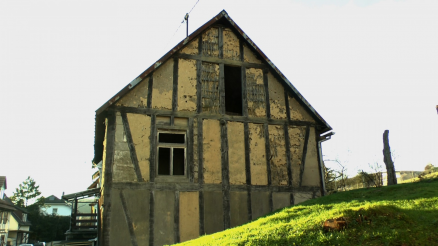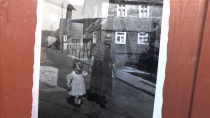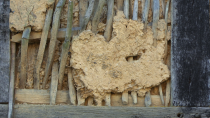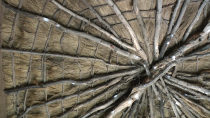
The Mud House Way
18 Min., HD, Farbe, Stereo
D 2018
Kamera, Sound, Schnitt: Eva C. Heldmann
Stimme: Danielle Motlhokathari-Schmidt
Text: Bessie Head, Manfred Gerner
In a black-and-white photo from the family album, I, aged two, and my great-aunt are depicted in front of half-timbered houses made with clay. I grew up in such a house. These houses and their material still interest me. How are the houses built?
In 2013 I start filming mud houses in Botswana, Southern Africa. In a house in the Kalahari Desert lives a family. The house was built in the traditional way with mud (including clay, sand and cow dung), wood and grass, and is traditionally furnished. Another house is being repaired and plastered. Wall building is women's work; "If she liked help and wanted the house quickly, she would say to the other women: 'Come and join me in the work.'" (Bessie Head, 1981)
In Kanye, a village-town on the edge of the Kalahari, I filmed a mud house on the royal grounds. The royal family built the house about 60 years ago for its first-born daughter. The mud house was inhabited until 2008, most recently by a migrant craftsman from South Africa. Ever since the house was vacated, it has been falling apart. Rain drips through the holey roof. And in fast rhythms, the sun burns its lightplay onto the mud wall.
The photo of me and my great-aunt was taken in the Hessian village of Offdilln, where one part of my family comes from. Two of the family's half-timbered houses still exist, a barn and the old blacksmith's shop, both decaying. The barn was used as a holiday home and has been vacant for about 30 years. The blacksmith's shop, protected as a historic building, needs support from scaffolding. Gradually the outer lime crumbles, exposing the wickerwork with clay, which crumbles next.
The houses are slowly decaying under the burden of rain and storm. They are built from earth and will be returned to earth - unless we decide to keep them.




